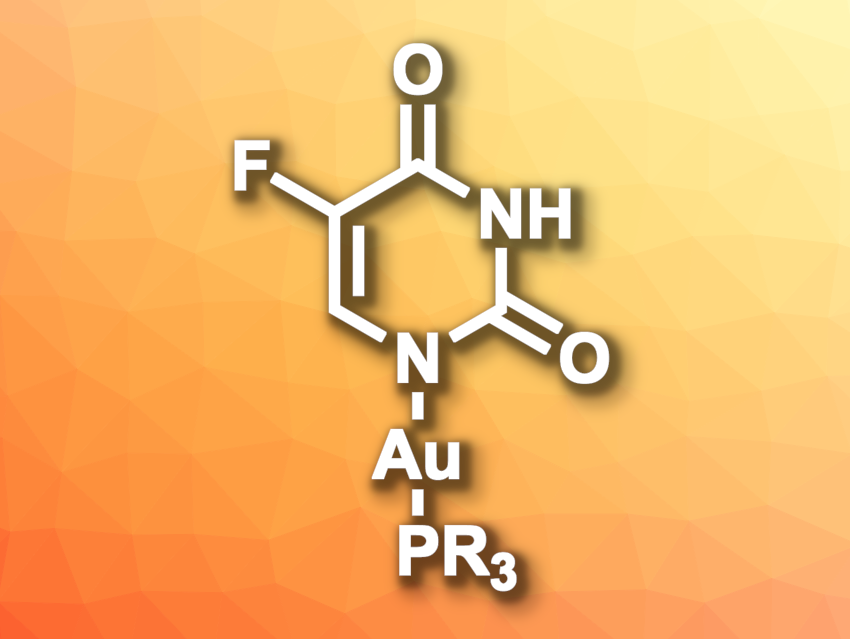5-Fluorouracil, a nucleobase derivative, is used in cancer treatment. It has also shown antibacterial effects. Some gold complexes can also serve as antibacterial compounds. Thus, combining gold and 5-fluorouracil could be interesting. However, examples of gold(I) complexes with 5-fluorouracil derivatives are extremely rare so far.
Elena Atrián-Blasco, Elena Cerrada, Universidad de Zaragoza-CSIC, Spain, and colleagues have synthesized a series of gold(I) 5-fluorouracil complexes, which are the first reported 5-fluorouracil–Au coordination compounds according to the researchers. The team prepared gold(I) phosphine complexes of 5-fluorouracil (pictured) with PR3 = PTA (1,3,5-triaza-7-phosphaadamantane), DAPTA (3,7-diacetyl-1,3,7-triaza-5-phosphabicyclo[3.3.1]nonane), PPh3 (triphenylphosphane), or TPPTS (trisodium 3,3′,3′′-phosphanetriyltri(benzene-1-sulfonate). The complexes were prepared from 5-fluorouracil, which was reacted with KOH in methanol before [AuCl(PR3)] was added. For PTA as the phosphine, a dinuclear derivative of the type [Au2(5-fluorouracil)(PTA)2] could be obtained by using two equivalents of KOH and [AuCl(PTA)].
The researchers then studied the antibacterial activity of the complexes against Gram-negative Escherichia coli and Gram-positive Bacillus subtilis. They found that the addition of the gold subunit to 5-fluorouracil increased the antibacterial activity significantly in most cases. The team used scanning electron microscopy (SEM) and observed that the compounds damaged the bacterial cell membrane. Overall, the work indicates that combining known drugs with metal centers to form complexes could be a useful approach to increasing their activity.
- Antibacterial properties of phosphine gold(i) complexes with 5-fluorouracil,
Ricardo Ferrando, Scott G. Mitchell, Elena Atrián-Blasco, Elena Cerrada,
Dalton Trans. 2023.
https://doi.org/10.1039/d3dt01159c




